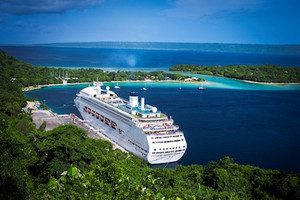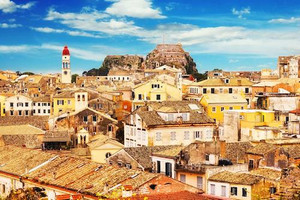
For centuries it was Europe’s most glittering city and while Lisbon’s grandeur may have faded, it remains an enduring reminder of the past.
Overview
The 15 kilometre journey up the Tagus River is one of many reasons why cruising to Lisbon is so special, and if your ship docks at the new Alfama terminal your backdrop will be the small hillside occupied the city's stunning Moorish Alfama district. Lisbon is Portugal’s capital and largest city, a destination where the sun shines 290 days a year and the temperature rarely drops below 15C. The city’s trademark seven hills are spread across the cityscape, and capped by a collection of miradouros or viewpoints, offering views over Lisbon, the Tejo and beyond. And for cruise visitors there is much to enjoy, even if you are only visiting for a day.
The Facts
Location: On the southwestern end of Portugal where the Atlantic Ocean and Tagus River meet.
Language: Portuguese, although in the tourist areas some people understand English.
Currency: The Euro.
Docking/Anchoring: Most cruise ships dock in two locations. The old commercial port of Doca de Alcantara is just over three kilometres from the city centre and close to the 25th of April bridge, while the newer port of Alfama (also called Santa Apolonia) has three berths upriver from the city centre. Where exactly you will dock depends on the size of your ship and the cruise traffic of the day.
Transport: At both cruise docking areas there should be taxis, and most cruise lines offer a shuttle to the downtown area.
Don’t Miss
The Alfama is a collection of steep and twisted cobblestone alleys and remains the best preserved section of Lisbon’s past. While most of the city was rebuilt after a devastating earthquake in 1755, which claimed more than 15,000 lives, much of survived intact and its Moorish influence can still be seen today.
Baixa District is a place to people watch and shop. Lisbon's downtown area has large squares and pedestrian streets making it a joy to explore on foot, and it stretches from the Tagus River to the main Avenida da Liberdade. Also rebuilt after the earthquake in 1755, it is blessed with buildings, tiled art deco shop fronts and lively street vendors.
Bairro Alto is next to the Baixa area, and is Lisbon's bohemian heart as well as a good place to try some local cuisine such as soft shell crab and pasta. It's hilly, with narrow streets and bursting with ethnic charm, and if your stay extends into the evening, after dark is the time to visit.
Belem is around eight kilometres from the city centre by taxi, and an ancient city famous for a dramatic 15th century tower called the Torre de Belem. A UNESCO World Heritage site, they describe it as "a reminder of the great maritime discoveries that laid the foundations of the modern world".
Best Photo Op
Without doubt from the top of the Castelo de São Jorge, where you see the red terracotta roofs, ochre facades and elegant town squares of Lisbon stretch into the horizon, with the Tagus River as your backdrop.
Shopping
Despite taking on the Euro as the national currency, Lisbon is one of the least expensive capitals in Europe for shopping. Baixa (or Downtown) is the best place to start for its local boutiques and handmade goods which make good souvenirs such as antique and contemporary hand made tiles, regional ceramics and textiles and the area has a good reputation for selling gold. High fashion designers can be found on Avenida da Liberdade and if you’re after some alternative fashions, then Bairro Alto is the go.
Food And Drink
If you do only one thing in Lisbon, go Port tasting. Portugal's famous for this sweet, fortified wine which not only makes a great souvenir but comes in many forms. There are port bars dotted around the city where you can try everything from mass produced varieties to some rare local drops. For local foods, fish and shellfish are top of the list, with varieties including salted cod, grilled sardines and horse mackerel.
Pick of the Excursions
Sintra is usually a full day tour, a beautiful hill top town packed with Moorish castles, museums and gardens, which used to be the haunt of Portuguese royalty and today is another UNESCO World Heritage site.
Another option is a tour to Fatima. Not just for the religious, this place is home to one of the most important shrines in the world dedicated to the Virgin Mary, also the Monastery of Batalha and it is near to the medieval town of Obidos.
- By:
- Joanna Hall






